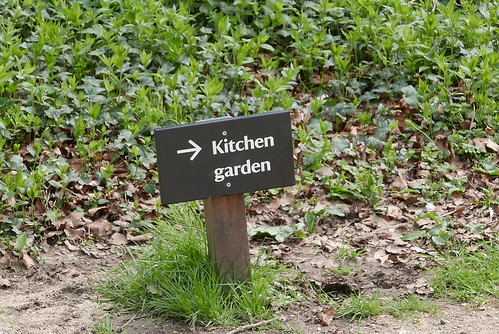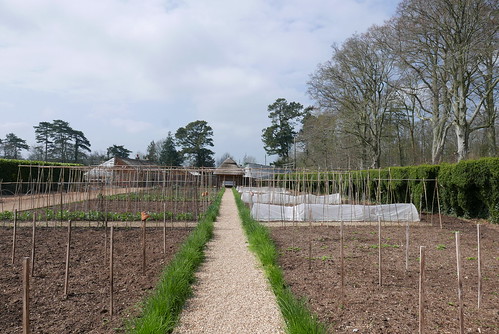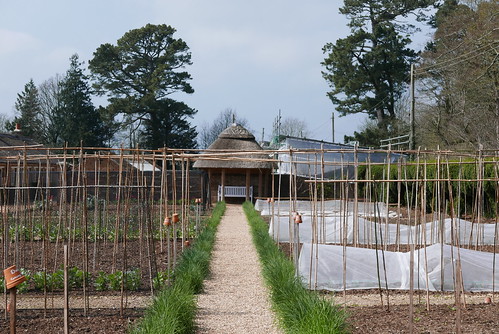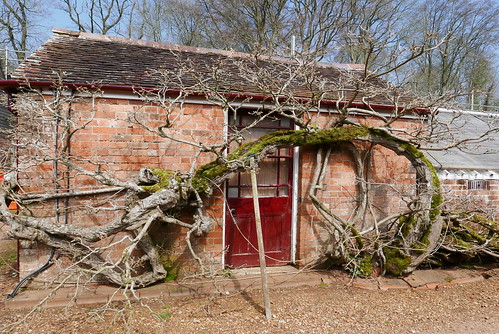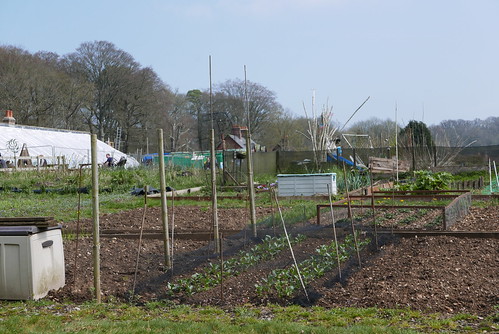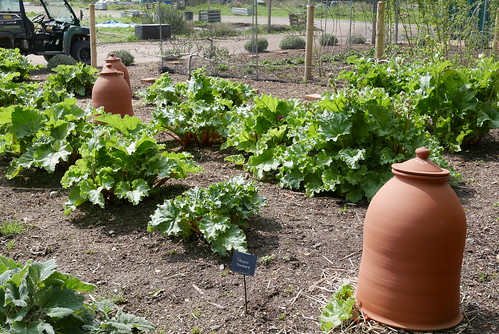Saturday, 14 April 2018
Wednesday, 28 February 2018
Tuesday, 27 February 2018
Tuesday, 16 January 2018
Tales of compost by Gloria Nicol
Gloria Nicol's loam sweet loam | Life and style | The Guardian:
At the first sight of blossom something happens to me. The sap starts to rise and I become seriously overambitious. It has happened so often now that I know the signs; of course this year will be the one, the one when I grow absolutely everything. Hope and enthusiasm is all well and good, but reality means remembering to plant the seeds.
So to begin, some tidying up is required. To make space to plant a container grown quince tree I first need to move the compost heap. As a lazy but dedicated composter I avidly collect my kitchen waste, add it to the pile but then do very little else. I learnt early on that kitchen scraps alone can make for a slimy result, so I add plenty of egg boxes, cardboard and crumpled paper along with fruit peelings. Apart from that, I know I should turn the heap every now and again to help the aerobic process along and encourage faster decomposition, but I don't. My method falls somewhere between aerobic and anaerobic, by adding enough cellulose the breakdown takes longer but the eventual outcome seems to be the same. Apart from one little detail; there will be lots of seeds in there too as the advantage of turning the heap regularly is that it helps the heap to heat up and kill the seeds lurking within. So I'm just going to have to pick out the seedlings as they appear as penance for my laxity.
My well rotted compost unearthed from the bottom of the heap had the enviable look of a fine tilth, black and friable, just like you buy from a shop! I could spread it on the raised beds, but don't think it will go very far, or perhaps it would be best used to make my own seed compost, as there will be plenty of seed sowing needs doing if I am to achieve this year's target to grow absolutely everything.
Seed compost doesn't need to be nutrient rich as the seeds come with their food requirements already built in. Seed compost is only meant to give the seeds the start in life they need for the first few precious weeks before being potted on or planted out to a more particularly suited environment. The main thing is that the compost allows some drainage so seedlings have the oomph to germinate. What else does my seed compost need? All the books use the word 'loam'. Making loam entails stacking turf, grass side to grass side, and leaving it to rot down for a year or two, but a two-year wait isn't going to help my 2012 planting schedule. So is loam not just soil? The field behind my house has molehills springing up all over the place, so I decided to collect some to use instead. The moles have done the sifting and aerating for me. One thing to note here: you shouldn't collect molehills from land you don't own without permission.
So I've mixed my compost with molehill loam and added in a handful of sharp sand to keep it nicely opened up. If I had leafmould or coir I might be tempted to include some of them too. Molehills also come with a fair share of seeds, so to give my seedlings the best start in life I bake seed compost in the oven to be sure it is sterile and free from weeds. To do this, place compost in an oven proof container in an even 10cm deep layer, cover with tin foil and bake at 80˚C for 30 minutes. Or alternatively a microwave will do the job (cling film instead of tin foil) for a few minutes on high power. Be warned, it makes your house stink.
'via Blog this'
At the first sight of blossom something happens to me. The sap starts to rise and I become seriously overambitious. It has happened so often now that I know the signs; of course this year will be the one, the one when I grow absolutely everything. Hope and enthusiasm is all well and good, but reality means remembering to plant the seeds.
So to begin, some tidying up is required. To make space to plant a container grown quince tree I first need to move the compost heap. As a lazy but dedicated composter I avidly collect my kitchen waste, add it to the pile but then do very little else. I learnt early on that kitchen scraps alone can make for a slimy result, so I add plenty of egg boxes, cardboard and crumpled paper along with fruit peelings. Apart from that, I know I should turn the heap every now and again to help the aerobic process along and encourage faster decomposition, but I don't. My method falls somewhere between aerobic and anaerobic, by adding enough cellulose the breakdown takes longer but the eventual outcome seems to be the same. Apart from one little detail; there will be lots of seeds in there too as the advantage of turning the heap regularly is that it helps the heap to heat up and kill the seeds lurking within. So I'm just going to have to pick out the seedlings as they appear as penance for my laxity.
My well rotted compost unearthed from the bottom of the heap had the enviable look of a fine tilth, black and friable, just like you buy from a shop! I could spread it on the raised beds, but don't think it will go very far, or perhaps it would be best used to make my own seed compost, as there will be plenty of seed sowing needs doing if I am to achieve this year's target to grow absolutely everything.
Seed compost doesn't need to be nutrient rich as the seeds come with their food requirements already built in. Seed compost is only meant to give the seeds the start in life they need for the first few precious weeks before being potted on or planted out to a more particularly suited environment. The main thing is that the compost allows some drainage so seedlings have the oomph to germinate. What else does my seed compost need? All the books use the word 'loam'. Making loam entails stacking turf, grass side to grass side, and leaving it to rot down for a year or two, but a two-year wait isn't going to help my 2012 planting schedule. So is loam not just soil? The field behind my house has molehills springing up all over the place, so I decided to collect some to use instead. The moles have done the sifting and aerating for me. One thing to note here: you shouldn't collect molehills from land you don't own without permission.
So I've mixed my compost with molehill loam and added in a handful of sharp sand to keep it nicely opened up. If I had leafmould or coir I might be tempted to include some of them too. Molehills also come with a fair share of seeds, so to give my seedlings the best start in life I bake seed compost in the oven to be sure it is sterile and free from weeds. To do this, place compost in an oven proof container in an even 10cm deep layer, cover with tin foil and bake at 80˚C for 30 minutes. Or alternatively a microwave will do the job (cling film instead of tin foil) for a few minutes on high power. Be warned, it makes your house stink.
'via Blog this'
Thursday, 4 January 2018
Windowsill Farming with Microgreens - Milkwood: permaculture courses, skills + stories
Windowsill Farming with Microgreens - Milkwood: permaculture courses, skills + stories: "Many vegetables, greens and herbs are great to grow as microgreens:
lettuce
coriander
rocket
buckwheat
amaranth
beetroot
broccoli
spinach
basil
sunflower
daikon radish
mustard greens"
'via Blog this'
'via Blog this'
Микрозелень or windowsill herb garden.
- How to Make a Windowsill Herb Garden & Grow Culinary Herbs:

- How to Make a Windowsill Herb Garden | 6 Easy Steps:
- Once you select a container or containers, the second step is to ensure good drainage.
Check out the bottom of the planter for drainage holes, if they are not sufficient, make a few more.
You don’t need to put gravels or clay balls to make a drainage layer.
This is a myth and doesn’t do any good for drainage.
Must check out our article to learn why you shouldn’t do this!
- WHY you should not add GRAVELS to pots: Busting An Old Myth with Proofs and Evidences | Balcony Garden Web:
Provide Quality Potting Soil
Soil or growing medium for growing herbs should be of best quality.
It has to be light, penetrable, fertile and airy.
Buy soilless potting mix or make your own by adding perlite, compost and garden soil.
You can’t use regular soil for growing plants in containers, and the soilless growing medium is essential for the success of your windowsill herb garden.
- Windowsill Vegetable Gardening | 11 Best Vegetables To Grow On Windowsill | Balcony Garden Web:
Choose basil, rosemary, thyme, oregano, cilantro, and sage.
Microgreens
- Windowsill Farming with Microgreens - Milkwood: permaculture courses, skills + stories:
- Many vegetables, greens and herbs are great to grow as microgreens:
lettuce
coriander
rocket
buckwheat
amaranth
beetroot
broccoli
spinach
basil
sunflower
daikon radish
mustard greens
Mint, sage, parsley, thyme and marjoram are the herbs traditionally used in English cookery.
Perlite v clay pebbles
керамзит:
- VitaLink 10L Clay Pebbles Bag: Amazon.co.uk: Garden & Outdoors: £6.53
Perlite:
- Wilko Horticullture Perlite 10L at wilko.com:
вермикулит:
- Wilko Horticulture Vermiculite 10L at wilko.com: £5.00


- How to Make a Windowsill Herb Garden | 6 Easy Steps:
- Once you select a container or containers, the second step is to ensure good drainage.
Check out the bottom of the planter for drainage holes, if they are not sufficient, make a few more.
You don’t need to put gravels or clay balls to make a drainage layer.
This is a myth and doesn’t do any good for drainage.
Must check out our article to learn why you shouldn’t do this!
- WHY you should not add GRAVELS to pots: Busting An Old Myth with Proofs and Evidences | Balcony Garden Web:
Provide Quality Potting Soil
Soil or growing medium for growing herbs should be of best quality.
It has to be light, penetrable, fertile and airy.
Buy soilless potting mix or make your own by adding perlite, compost and garden soil.
You can’t use regular soil for growing plants in containers, and the soilless growing medium is essential for the success of your windowsill herb garden.
- Windowsill Vegetable Gardening | 11 Best Vegetables To Grow On Windowsill | Balcony Garden Web:
Choose basil, rosemary, thyme, oregano, cilantro, and sage.
Microgreens
- Windowsill Farming with Microgreens - Milkwood: permaculture courses, skills + stories:
- Many vegetables, greens and herbs are great to grow as microgreens:
lettuce
coriander
rocket
buckwheat
amaranth
beetroot
broccoli
spinach
basil
sunflower
daikon radish
mustard greens
Mint, sage, parsley, thyme and marjoram are the herbs traditionally used in English cookery.
Perlite v clay pebbles
керамзит:
- VitaLink 10L Clay Pebbles Bag: Amazon.co.uk: Garden & Outdoors: £6.53
Perlite:
- Wilko Horticullture Perlite 10L at wilko.com:
вермикулит:
- Wilko Horticulture Vermiculite 10L at wilko.com: £5.00

Friday, 10 November 2017
DIY: How to Store Dahlia Tubers in Winter - Gardenista
DIY: How to Store Dahlia Tubers in Winter - Gardenista:
We packed layers of tubers in shredded paper in a cardboard box before storing it on a shelf in the garden shed.
'via Blog this'
We packed layers of tubers in shredded paper in a cardboard box before storing it on a shelf in the garden shed.
'via Blog this'
Герань.
Герань: спасти и сохранить - Садовое обозрение:
Что нужно сделать. Чтобы оживить любимую шерань?
Во-первых, очистить растение от засохших соцветий и листьев.
Во-вторых, тщательно промыть листья и стволики, чтобы удалить возможные споры болезней и вредителей. Используйте для этой процедуры Зеленое мыло.
В-третьих, следить за влажностью почвы – для пеларгонии одинаково критичен как недолив, так и перелив. Почва всегда должна быть влажной на глубине 2-2,5 см от поверхности, т.е. верхний слой лучше держать сухим.
В-четвертых, нужно сделать восстановительный полив.
Для этого возьмите литровую банку, налейте до плечиков теплой фильтрованной воды, добавьте 30 г живых дрожжей и столовую ложку сахара.
Накройте салфеткой и поставьте в тепло перебродить в течение 2-3-х дней.
Слейте 100 мл настоя, растворите в 4-х литрах воды, размешайте и поливайте пеларгонии под корень 2 раза в неделю в течение месяца.
Для одного растения достаточно 500 мл раствора на один полив.
Смело используйте эту подкормку и для других комнатных растений.
Далее уход обычный для зимующих на подоконнике растений.
А как сохранить пеларгонии, если места на подоконнике мало, а растений много?
Лучший вариант – обрезать низко растения и поставить прямо в горшках в сухой прохладный подвал.
Но можно и облегчить работу.
Для этого растения вытаскивают их почвы.
Предварительно подсушив, отряхивают с корней грунт, обрезают надземную часть низко, подсушивают срезы и каждое растение заворачивают в газетную бумагу.
Затем растения складывают в ящик и помещают в сухое прохладное помещение – опять-таки в лучше в подвал.
В конце февраля зимующие в подвале растения осматривают, тронувшиеся в рост переносят на свет и начинают постепенно формировать.
'via Blog this'
Что нужно сделать. Чтобы оживить любимую шерань?
Во-первых, очистить растение от засохших соцветий и листьев.
Во-вторых, тщательно промыть листья и стволики, чтобы удалить возможные споры болезней и вредителей. Используйте для этой процедуры Зеленое мыло.
В-третьих, следить за влажностью почвы – для пеларгонии одинаково критичен как недолив, так и перелив. Почва всегда должна быть влажной на глубине 2-2,5 см от поверхности, т.е. верхний слой лучше держать сухим.
В-четвертых, нужно сделать восстановительный полив.
Для этого возьмите литровую банку, налейте до плечиков теплой фильтрованной воды, добавьте 30 г живых дрожжей и столовую ложку сахара.
Накройте салфеткой и поставьте в тепло перебродить в течение 2-3-х дней.
Слейте 100 мл настоя, растворите в 4-х литрах воды, размешайте и поливайте пеларгонии под корень 2 раза в неделю в течение месяца.
Для одного растения достаточно 500 мл раствора на один полив.
Смело используйте эту подкормку и для других комнатных растений.
Далее уход обычный для зимующих на подоконнике растений.
А как сохранить пеларгонии, если места на подоконнике мало, а растений много?
Лучший вариант – обрезать низко растения и поставить прямо в горшках в сухой прохладный подвал.
Но можно и облегчить работу.
Для этого растения вытаскивают их почвы.
Предварительно подсушив, отряхивают с корней грунт, обрезают надземную часть низко, подсушивают срезы и каждое растение заворачивают в газетную бумагу.
Затем растения складывают в ящик и помещают в сухое прохладное помещение – опять-таки в лучше в подвал.
В конце февраля зимующие в подвале растения осматривают, тронувшиеся в рост переносят на свет и начинают постепенно формировать.
'via Blog this'
Thursday, 2 November 2017
Thursday, 19 October 2017
Subscribe to:
Comments (Atom)
